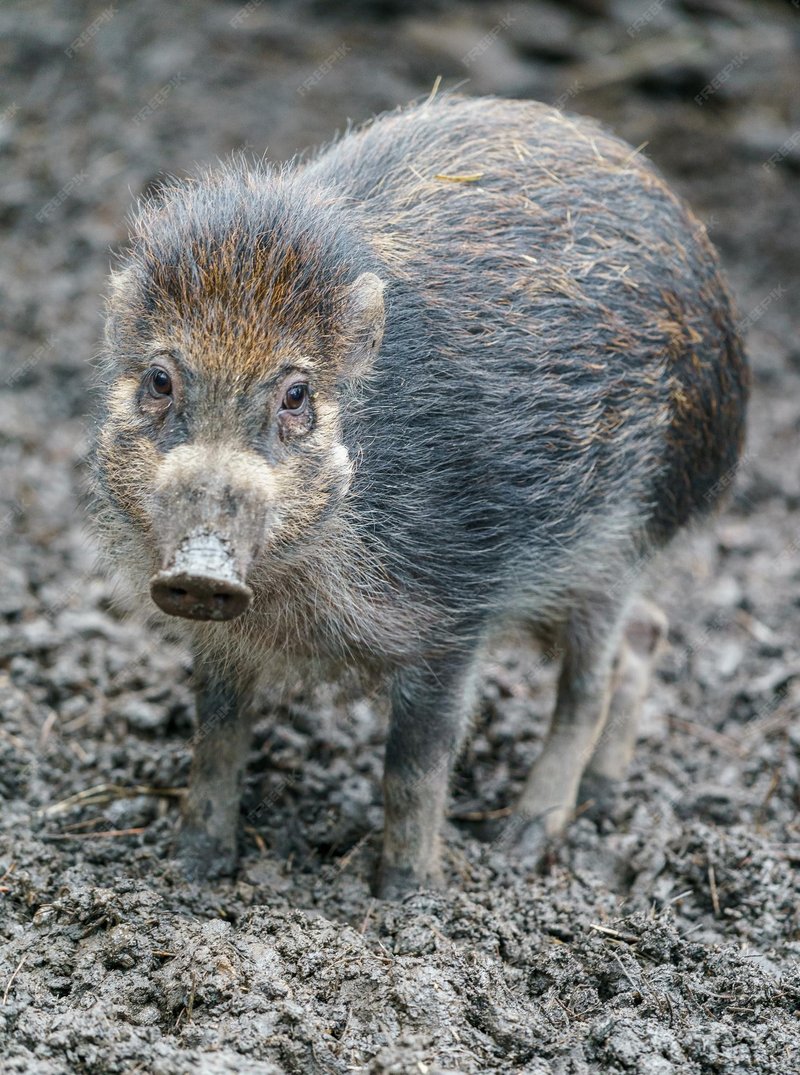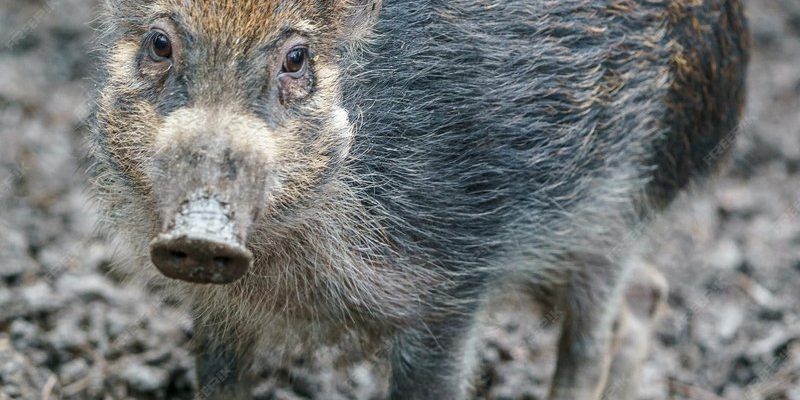
You might be wondering why the Visayan warty pig is so special. Well, for starters, it’s not just any pig—it’s part of a unique biodiversity hotspot. The Philippines is home to many unique species, and the Visayan warty pig is a prime example of this rich ecological tapestry. With the challenges posed by habitat loss and hunting, understanding their diet and hunting strategies can help us appreciate what’s at stake and why conservation matters.
Habitat of the Visayan Warty Pig
To understand the diet and hunting strategies of the Visayan warty pig, we first need to look at its habitat. These pigs prefer the dense forests and mountainous areas of the Visayan Islands, where they can find plenty of cover and food. They’re often found in steep, rugged terrains which provide the thick brush necessary for hiding from predators.
The dense foliage also helps them forage for food. In these habitats, the Visayan warty pig can easily access roots, fruits, and other vegetation, which are essential parts of their diet. Think of their home as a giant natural supermarket—full of goodies just waiting to be discovered. This environment provides them with both shelter and sustenance.
Additionally, you might be surprised to learn that these pigs can adapt to a variety of environments, from lowland forests to higher altitudes. However, they do tend to avoid heavily populated areas. After all, who wants to navigate through bustling human activity when you have a serene jungle to explore?
What Do Visayan Warty Pigs Eat?
Now, let’s talk about their diet. Visayan warty pigs are primarily **herbivores**, which means they mainly eat plants. Their diet consists of a wide variety of food sources, including:
- Roots and tubers: These are a staple part of their diet. The pigs dig into the ground with their snouts to unearth delicious snacks.
- Fruits: They enjoy a variety of fruits, which provide essential nutrients and sugars.
- Leaves and grasses: Tender shoots and foliage are also on the menu, especially when other food sources are scarce.
Honestly, their foraging behavior is quite impressive. They can cover a lot of ground in search of food, using their keen sense of smell to sniff out the best finds. As they root around, they help aerate the soil, which can actually benefit their ecosystem. It’s a win-win situation!
You might be surprised to learn that, while they are primarily herbivores, Visayan warty pigs have been known to occasionally consume small insects or carrion. This flexibility in their diet allows them to adapt to changes in their environment, showcasing their resourcefulness.
Foraging Techniques of the Visayan Warty Pig
Foraging isn’t just about being a great digger; it’s an art form for the Visayan warty pig. They employ specific techniques that make their searching more effective. For instance, they often use their strong, muscular snouts to flip over leaves and soil. This not only uncovers food but also helps them create a path in dense undergrowth.
Another clever tactic they use is social foraging. These pigs are known to travel in small groups, which means they can help each other find food. Imagine a group of friends out foraging together—sharing tips, pointing out the juiciest fruits, and keeping an eye out for danger. This social behavior increases their chances of finding food while also offering some protection from predators.
Interestingly, their foraging patterns can change depending on the season. During the rainy season, for example, you’ll find them feasting on more fruits and roots, while in the dry season, their diet may shift toward tougher plants that retain moisture better. Their ability to adapt their foraging styles is part of what makes them such resilient animals.
Hunting Strategies: Not Just for Food
You might think of hunting as something big predators do, but for the Visayan warty pig, it’s more about finding their next meal. They don’t hunt in the traditional sense; rather, they employ strategies that maximize their foraging success.
For these pigs, **patience** is key. Much like waiting for a bus, they often stand still in a patch of foliage, sniffing the air and listening intently for sounds that signify food nearby. Once they detect something promising, they spring into action—digging and rooting with purpose.
Another aspect of their strategy includes **avoiding danger** while foraging. With their keen senses, they can detect threats like predators or even humans long before they’re visible. If they sense danger, they tend to freeze and observe before making their escape. It’s a clever system to protect themselves while still being able to enjoy their meals.
Even though they’re not traditional hunters, their agility and quick thinking make them adept at navigating their environment. This adaptability is crucial, especially given their declining population in the wild.
Threats to the Visayan Warty Pig
As fascinating as the Visayan warty pig is, it faces serious threats that impact its survival. One of the biggest challenges is habitat loss. As forests are cleared for agriculture or development, these pigs find it increasingly difficult to find food and shelter. Imagine trying to find your favorite café in a city that’s rapidly changing—you’d be frustrated and hungry!
Another significant threat is **hunting**. Unfortunately, these pigs are hunted for food and sport, leading to a sharp decline in their numbers. While we can appreciate their unique place in the ecosystem, hunting pressures them even further.
With all these challenges, it’s clear that conservation efforts are crucial. Protecting their habitats and ensuring laws against hunting are enforced can help stabilize their population. By raising awareness about the Visayan warty pig, we can foster a sense of responsibility and care for these incredible creatures.
Conservation Efforts
Speaking of conservation, there are several initiatives underway aimed at protecting the Visayan warty pig. Organizations are working to preserve their habitats by creating protected areas and promoting sustainable land use practices. This approach not only benefits the pigs but also helps preserve the entire ecosystem they depend on.
Additionally, education plays a huge role in conservation. By teaching local communities about the importance of the Visayan warty pig and its role in the ecosystem, we can foster a sense of stewardship. When people understand the value of these animals, they’re more likely to want to protect them.
Some initiatives also involve breeding programs to help increase their population in controlled environments. By carefully managing genetics and providing safe spaces, these programs aim to boost the numbers of Visayan warty pigs and eventually reintroduce them into the wild.
It’s a challenging journey, but every effort counts. It’s a bit like baking a cake—you need the right ingredients, patience, and a good recipe to make it work.
The Visayan warty pig might not be the first animal that comes to mind when you think of wildlife, but it plays a vital role in its ecosystem. From its diverse diet to its ingenious foraging strategies, this pig showcases how fascinating and complex nature can be. Unfortunately, threats like habitat loss and hunting put these unique creatures at risk, making conservation efforts more important than ever.
By learning about the Visayan warty pig and its struggles, we gain insight into the delicate balance of ecosystems and the necessity of preserving them. So, next time you hear about this special pig, remember—it’s not just about the pig itself but what it represents in the grand tapestry of nature. Let’s work together to protect these incredible animals and their habitats for future generations. Every small step towards conservation can make a significant difference.

